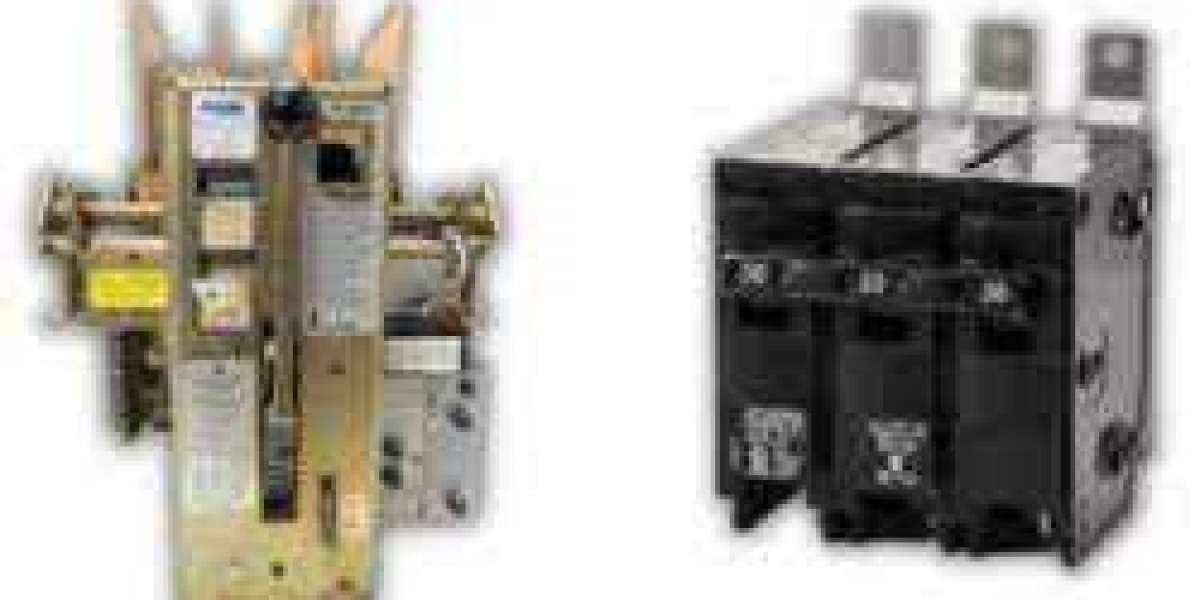
Air circuit breakers can provide various protection features to protect power lines as well as electrical devices from overload, short-circuits, overvoltage, and short-circuits. They also require less care than oil-type circuit breakers.
They typically consist of two contacts. One pair carries the electrical current and is composed of copper-based metal. The other pair is called the arcing contact, and is constructed of carbon.
used Circuit Breakers
Contacts for electrical power in a circuit breaker must not only be able to carry current, but they must also stand up to the heat of the arc that is produced when interrupting (opening) them. The arc is extremely dangerous and potentially explosive, so the breaker needs to incorporate different methods to break it down and then extinguish it.
The frame of a circuit breaker provides the strength and rigidity required for a successful interruption of the current. It can be made from specific metal pieces which are then molded in an insulated frame or it could be a welded or bolted metal assembly. It also insulates and separates operating mechanisms and the original.
There are numerous types of circuit breakers that are available for use on the power grid or in your home. A few are low- to medium voltage and located in an breaker box. others have high voltages and are used to power large infrastructure.
A few are specially designed for purposes, like ground fault circuit interrupters (GFCIs) to protect against electrocution or shock in wet places, and also Earth leakage circuit breakers (ELCB) to detect unbalanced currents that may be flowing from the earth cable. Other types, such as arc fault circuit interrupters (AFCI) have been designed to recognize different forms of arcing electrical problems that older styles of breakers can miss, which can cause extreme heat within wiring, and even fire hazards within homes. They're currently being used along with traditional vacuum circuit breakers in order to create the most complete security system.
Blowers with mold
Molded breakers can be found in an insulated glass thermoset composite resin so that their parts are protected from heat sources outside. They feature multiple tripping mechanisms and are specifically designed to stop overflowing currents, safeguarding equipment from damage or even from fire. They possess a high interrupting capacity and are commonly used in power distribution equipment.
A circuit breaker molded in a case is powered by any mechanism that is electromechanical or solid state. They usually have current transformers that monitor the current to detect the presence of short circuits and overloads. When they detect something unusual, they send out a signal at the operator's device that triggers a trip. The handle on the breaker is connected to the operational switch and can be operated manually. The switch will open and close its toggle mechanism that is molded into the case to allow and close contacts.
Depending on their designs, molded case circuit breakers may include many poles. They may come with one, two or three poles, and each one has a different current and voltage rating. If you are choosing the best breaker suitable for your specific needs, think about the continuous current rating as well as the amount of arcing or fault current it is able to take on. It is also recommended that you check the breaker regularly for wear and tear including broken or cracked casings, discoloration of the insulation, and burn marks from being overheated.
Vacuum Circuit Breakers
Vacuum circuit breakers are used in power systems with medium voltage. They provide excellent current interruption capabilities and need less regular maintenance than most circuit breaker technology. As opposed to air circuit breakers, vacuum circuit breakers do not induce high overvoltages that could reduce isolation from other equipment. Vacuum circuit breakers comprise of a vacuum arc that quench chambers, current terminals tension insulators and an actuator. They come with a long mechanical lifespan and a greater breaking power than air counterparts. They are also easy to operate, inspect and maintain.
The medium that arcs out of VCB is a vacuum that provides much greater insulation strength than oil (in an oil-based CB) or the SF6 (in SF6 circuit breakers). As the contacts that move apart, they are ionized with the help of vacuum. This allows the surfaces of contact to quickly recover their insulating strength and prevents the arc from persisting.
The VCB is housed within an arc shield, and has one or more sealed interrupter units on each pole. The movable contacts in the unit of interrupter are attached with an operating rod which is protected which is linked to the opening mechanism. Metal bellows of stainless steel are used to enable the movable contacts to travel a few millimeters, based upon the current voltage. These bellows are essential because they establish the capability of the VCB to perform repeated operations without failure.
Air Circuit Breakers
Circuit breakers for air are usually used to control power station factories and their auxiliaries. They can also be used for protection for electrical machines such as capacitors, transformers and generators. These are typically used when there is a possibility of an explosion or fire hazard.
When the breaker's operating mechanism is activated, it causes pressurized air to move upward by means of an arc chute, the chamber surrounds the contact points. Air moves the arc towards the ball, and then it's put out. Circuit breakers with air blasts make a fantastic choice for arc quenching because they provide high interruption current as well as lower arc voltages than other types of circuit breakers. Circuit breakers available for purchase at surplusrecord.
The arc can be made of any material but is typically made of high-temperature polymers reinforced with glass fiber or ceramics. The walls in the arc chute are involved in cooling through acting as an insulator of the arc. The arc chute is also constructed to keep contact points from those that arc. The auxiliary and arcing contacts shut before the primary ones to shield them from harm.
There are a variety of companies that manufacture air circuit breakers. There are several of them, including Eaton (Ireland), ABB (Switzerland), Siemens (Germany) and Schneider Electric (France). The market for air circuit breakers is controlled by the ABB group, which has an overwhelming portion of the global market.



